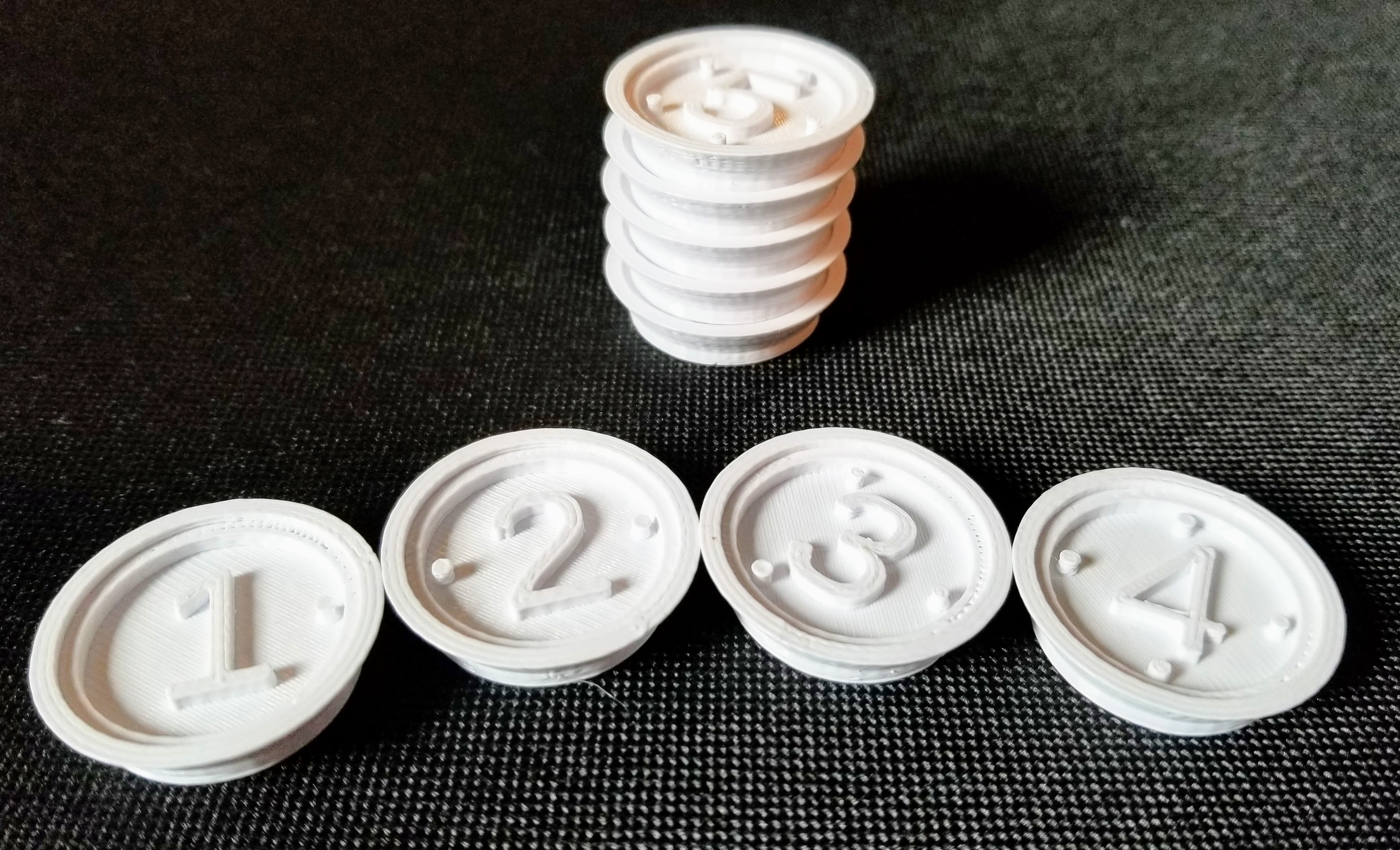
"Quiet Coins" - Customizable tokens to buy you some peace and quiet
prusaprinters
<p>This originated as an idea for briefly pacifying children stuck at home during the COVID-19 pandemic. One child had recently figured out the concept of an Advent Calendar well enough to enjoy them, but was asking to do one long after Christmas had passed. So, we set to work thinking up what small item could be printed at home to place in a newly-renamed "Quarantine Calendar" for a few minutes of peace and quiet per day. A multi-purpose coin/token was our answer. Quiet Coins are easy to print (~10min, no supports or brim required), small enough to fit in at least our re-usable Advent calendar, and multi-functional: they can become many things based on what design you add to them. They can be the day's art project - whether blank or with an added design, have the kids paint them! Additionally, they are sized to match common checkers pieces, so they can be used as new checkers or as replacements in games: they're drop-in replacements for at least the edition of Connect Four that we have.</p> <p>Usage ideas:</p> <ul> <li>Give them one-a-day per kid in an <del>Advent</del> Quarantine Calendar.</li> <li>Paint them as a daily art project - either the blank ones, or ones customized with a design, character, etc.</li> <li>Use as math manipulatives: sample coins with digits 1-9 and corresponding number of dots are included.</li> <li>Use for alphabet learning (en_US alphabet ones coming soon, modify OpenSCAD file to get other alphabets)</li> <li>Use as in-home currency/rewards (for save for a prize/experience, to pay the "swear jar", etc.)</li> <li>Use as checkers, or to replace lost checkers in board games (compatible with games like Connect Four, etc.)</li> <li>Bury them (with or without pirate-themed designs) in sand/dirt/sensory bin as "dubloons" for a sensory experience for the kids.</li> <li>and more - please share what you make!</li> </ul> <p>This is first and foremost a concept and starting point - you know your kids best and what they'd respond to. The coins have space to add a design (simple or sophisticated) either raised or engraved, and still be able to stack neatly. OpenSCAD sources, well documented, are included: to make your own decorated version, just <code>include <token.scad>;</code> and combine your design with <code>baseToken();</code>. The base design has been adjusted so that the top surface of the coin is at z=0, so you can add above or subtract below to your heart's content.</p> <p>We'll add more designs soon, but we've started with the blank coin as well as a set of number coins: the digits 1-9, with little bumps/pips corresponding to each number, turning them into math manipulatives. I was able to print all 9 on a single run in a bit over an hour.</p> <h3>Print instructions</h3><p>Most of the pictures show prints made with a 0.4mm nozzle (most common size), 0.28mm layer height, 2 perimeters and top/bottom layers, 18% infill, no supports, brims, or rafts, in eSun PLA-PRO. (Each coin takes about 10 minutes to print on my machine with these settings.) The model is very forgiving so just about any print settings that can produce something will work.</p> <p>Details:</p> <p>This is a very easy print. I tested with a 0.4mm nozzle, but nothing is that thin for the nozzle size to be critical. There's very little perceptible difference in quality between 0.2mm layers and 0.28mm layers, so feel free to use thick layers to save time if your printer is set up for it. I used eSun PLA-PRO in Cool White for the printed samples in the photos, in an old modified Makerbot Replicator 2X, but pretty much any filament printer should work. (SLA should also work, I would expect, if you can find isopropyl alcohol to post-process with - but that level of detail and precision is overkill.)</p> <p>No bridging is involved, and the first layer is large and round so bed adhesion should be not a problem. Overhangs are limited to a 30 degree slope to make the lip for nested stacking, which should be doable even in a poorly-tuned printer. Infill percentage is up to you: I used 18% gyroid infill because that's what my default PrusaSlicer settings were, but it wouldn't necessarily need to be that high. You can go down to 2 perimeters and 2 top/bottom layers to further save print time.</p> <p>The G-Code is for a Makerbot Replicator 2X with PLA in the left extruder. (I have a part cooling fan added too, but that shouldn't be too critical with this model.) I uploaded it just to quiet the warning - everyone with something other than a Rep2X (or FlashForge Creator Pro) will want to re-slice it.</p>
With this file you will be able to print "Quiet Coins" - Customizable tokens to buy you some peace and quiet with your 3D printer. Click on the button and save the file on your computer to work, edit or customize your design. You can also find more 3D designs for printers on "Quiet Coins" - Customizable tokens to buy you some peace and quiet.
